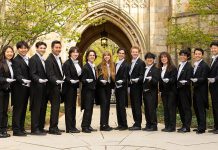
If you’re planning to go on the Jenner Headlands outing next Sunday, Sept. 1, be prepared to get high. You’ll be trekking on almost 6,000 acres of rugged Sonoma coastland above Jenner where the Russian River meets the Pacific Ocean.
The hike might be windy, cold and challenging depending what kind of shape you’re in, but so what. The important thing is that you get to experience unforgettable scenery and a rare chance to explore a pristine expanse of Sonoma County’s fabled countryside.
“This strenuous hike will ascend more than 800 feet in elevation. Some sections of the route are especially rough with uneven footing so please wear sturdy hiking boots,” says the guide to the headlands outing. “This hike is not for inexperienced hikers — you must be in good physical condition. A good guide to follow is, if you have not hiked five miles within the last month comfortably, this is not the hike for you. Along with the rough terrain comes the varying coastal weather that can bring bright, sunny skies or damp, cold, foggy and windy weather. We highly recommend dressing in layers and including a windbreaker jacket to protect you from the potentially biting coastal winds.”
Despite the forecast for potential wind, fog and exhaustion, the headlands outing will probably be fully booked. At least for the time being, the Jenner property is accessible only by guided tours like next Sunday’s outing guided by LandPaths, the non-profit outdoor advocacy group.
The headlands tour is one of three-dozen free public outings LandPaths will conduct in the coming months on Sonoma County Agricultural Preservation and Open Space District (SCAPOSD) land. The outings give us public access to unspoiled wilderness, working farms and future parks-in-development — all land that has been set aside as off-limits to development, thanks to the Sonoma County Agricultural Preservation and Open Space District and the quarter-cent sales tax Sonoma County voters first approved in 1990.
The free outings have become “a key way for the larger Sonoma County community to engage with the land it has protected,” said the Open Space District’s Public Engagement Specialist Sorrel Allen, who helps plan the treks. Besides LandPaths, three other non-profits offer outings to Open Space District protected properties, with each partner organization targeting specific audiences or populations such as families, youth, the Latino community, landowners and the general public, said Allen.
Over the next year, the Sonoma Resource Conservation District, a new merger of the Sotoyome Resource Conservation District and the Southern Sonoma County Resource Conservation District, will host at least nine outings on SCAPOSD-protected properties. These are education-oriented tours with themes such as “planning for biological diversity and water quality through sustainable land management practices, grazing management and grassland ecology, working forests and sustainable forest practices, farming and the environmental/regulatory arena, and farm succession planning.”
The Sonoma Ecology Center will provide 18 outings on SCAPOSD-protected properties; themes include history, local lore, astronomy, biology and creative writing.
The Center for Social and Environmental Stewardship will conduct five outings on District-protected properties, such as Cloverdale River Park and Windsor’s Riverfront Regional Park with at-risk youth.
“LandPaths is always planning how we can, as a community, discover and learn about the land by experiencing our backyard — working farms, parks, preserves, and other open space,” said Meg Hamill, LandPaths bilingual field programs assistant, in a blog on the LandPaths website. “These places are integral to the foundation and future of Sonoma County’s beauty and bounty.”
You can call LandPaths at 544-7284 or 524-9318 to sign up for these hikes, or go to the LandPaths website, landpaths.org, to see the outings calendar.
On Saturday, Sept. 7, LandPaths is guiding a water-born outing in the Estero Americano, the coastal estuary that separates Marin and Sonoma counties south of Bodega Bay.
“Join us for a paddle adventure amidst the natural splendor of the Estero Americano,” says the web invitation from LandPaths and the Open Space District. “Rich in estuarine wildlife, migratory waterfowl, and with unique fjord-like views, the Estero is a place of uncommon beauty and offers incomparable paddling opportunities. On this paddle we hope to catch some of the fall raptor migration as well.
“We will access this sublime body of water via the Estero Preserve, which comprises 127 acres of property along the Estero near its mouth at the Pacific.”
Paddlers can bring their own kayaks (or canoes) or rent one from Bodega Bay Surf Shack and Kayak at 875-3944. When ordering a boat, tell them it’s for the LandPaths Sept. 7 event. Double and single kayaks are available.
“The intent of this guided trip is to make the beauty of the Estero Americano accessible to paddlers of all ability levels,” say the outing guidelines. “Some of you are experienced paddlers while others may be on the water for the first time. To ensure that everyone enjoys themselves and stays safe, we will remain together as a group, taking our time to really soak in the beauty of this place.”
And don’t forget, we own it. Isn’t it about time we checked it out?
Bill Keene looked a little blindsided the other day when Shirlee Zane called him on the carpet about the cost of a daytrip to the county’s remote and scenic vistas.
“I think the district is wasting the taxpayers’ money,” said Zane, the 3rd District Sonoma County Supervisor, during an aggressive critique this summer when Zane questioned the high cost of the contracts for the free public outings program sponsored by the Sonoma County Agricultural Preservation and Open Space District.
“I was a little surprised,” said Keene, the Open Space District’s amiable General Manager, regarding the extent of Zane’s displeasure. The free outings have been part of the Open Space District’s offerings for more than 10 years — and the Board of Supervisors approves the district’s budget.
Zane said she wasn’t bad-mouthing the non-profits which the Open Space District pays to organize the free public outings conducted by LandPaths, the Sonoma Resource Conservation District, the Sonoma Ecology Center and the Center for Social and Environmental Stewardship. The contractors “are all wonderful non-profit agencies which I fully support,” said Zane, who’s gone on a few outings herself.
But at an average cost to the county of more than $3,000 apiece for free outings that average about 30 people, said Zane, “That’s a really expensive hike.”
Keene defended the programs as a good investment whose payback for the Open Space District and the community in general goes well beyond the cost of each outing. “This money is leveraged pretty well,” said Keene.
It is not unusual for outings participants to become volunteers who help care for Open Space District properties in stewardship roles doing everything from fixing fences to serving as docents, work that would be costly or impossible for staff to do, said Keene.
“Every dollar the district provides comes back in spades,” said Keene. “People say, ‘How can I help?’”
The non-profits try to reach a diverse cross-section such as Latinos, at-risk youth, and families as well as specific recreational users such as mountain bikers and birdwatchers, said Keene.
“Every single one of these outings is full,” said Keene. “They’re well-attended. They’re one of the most popular programs we have.”
Zane still wants to see records of how the outings are advertised and how well they are accommodating Latinos, seniors and “under-served” youth. A presentation to the Board of Supervisors is tentatively scheduled Sept. 10 when the four non-profits and SCAPOSD will share a cost breakdown analysis.
Last week a new outings advisory committee began meeting to talk about promoting greater public awareness of the free outings and the benefits of land conservation for agriculture, open space and recreation.
“The goal is to engage everyone and be more collaborative,” said Sorrel Allen, the Open Space District’s public engagement specialist.
Craig Anderson, the executive director of LandPaths, which started the Open Space outings program in 1999, said it’s a mistake to just look at the cost per outing. The larger story includes a return on investment such as the volunteer man-hours gained thought the outings programs and the educational benefits that flow from “connecting people to the land where they live,” said Anderson. “How do you put a dollar figure on that?
Participation in the outings programs has steadily increased and so has support from farmland owners who have placed their land in Open Space District conservation easements that include some public access, said Anderson.
One key benefit is the number of volunteers the outings recruit. Just in terms of the amount of time volunteers are now putting in to maintain and improve Open Space District properties, “They’re giving more back than the actual cost of the program to the county,” said Anderson.
Zane’s concern has created “a great opportunity for the board of supervisors, the non-profits and Open Space to sit down and talk about the real value of this program beyond just the dollar cost per head per trail mile,” said Anderson.
“To try to reduce it just to that misses the point. It’s like saying school is about the cost of pencils and pavement for the parking lot,” said Anderson. “There is so much more happening. I feel the same is true in our outings program.”
— F.R.








